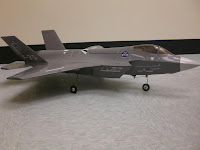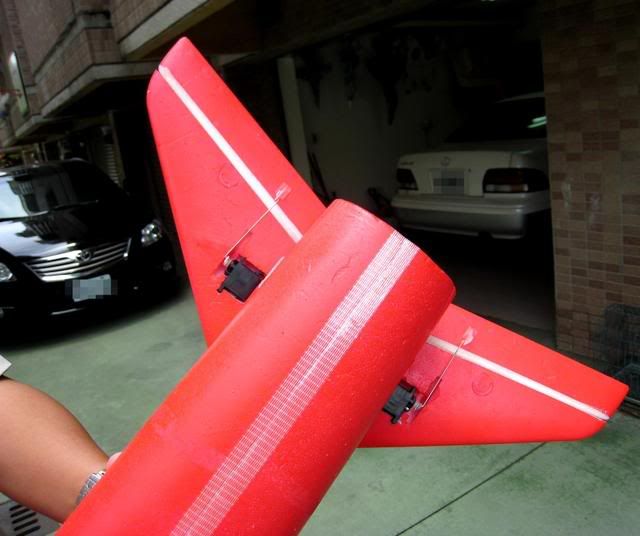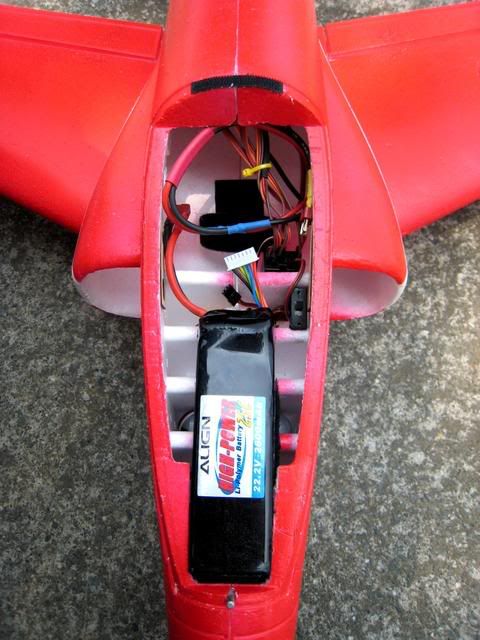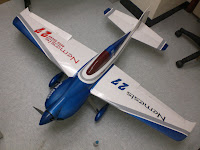FACTS ABOUT EDF AERODYNAMICSA clean intake lip is responsible for at least 20% of the total thrust!
An example: if one tests the Midi Fan without intake ring thrust decreases by about 20%. It is not the maximum size of the intake that counts, but the aerodynamic cleanness (bigger intake area with at the same time reduced turbulences due to intake ring). Additional intakes (cheater holes) should be resisted wherever possible.
Tailcones do not increase thrust!
Tailcones are not thought to increase thrust. Their task is rather to increase the efflux velocity so that the flying speed of the model can be maximized. The tail area corresponds to 90% of the ducted fan swept area.
Hint: A tailcone should be kept as short as possible. If the thrust tube between strators and outlet is longer then approximately 100mm, the tube should be the same diameter up to the outlet pipe.
Do I need a spinner?
Although it sound surprising, the spinner is not that important. So if you experience trouble, leave it off. If you have a bifurcated intake (example Super Sniper) it makes more sense to place a tube in the ducting the same diameter as the rotor hub and mount this in front of the rotor instead of a spinner. This is aerodynamically much cleaner (example Super Sniper).
Do I need a streamlined cone?
Not necessarily. Their influence is rather limited and with such a cone a motor runs hotter. Hot motors run less efficiently.
Rule of thumb: do not use a cone on small fans. On bigger fans it may make sense but do not expect miracles.
Any internal ducting should have a constant cross-sectional area over its whole length!
All cross-sectional changes in the internal ducting mean pressure changes, and with it acceleration and deceleration of the air. This should be avoided.
As much as possible the duct through the fuselage should be the same size (uniform cross sectional area) as the intake.
If a ducting needs to be widened, this should happen always smoothly at an angle of less than 4 degrees.
Position of the fan in the ducting
Aerodynamically there are not many differences whether you put the fan at the font or back of the ducting. But be aware of the following aspects:
- Critical wire length for brushless setups (in case the battery needs to be in the nose)
- CG
- Also in general fans runs smoother if they are placed towards the rear
A gap at the blade tip up to approx. 1.5mm is not harmful.
The airflow around the blade tips is always turbulent. Therefore a gap of up to 1.5mm for the big fans (>92mm, example Midi Fan) and 1mm for smaller fans (<92mm, example Mini Fan 480) does not influence the performance of the EDF. Only if the gap is bigger, you may realize losses in static thrust. Aeff, mentioned as part of the product specification, reflects this phenomenon.
FACTS ABOUT CHEATER HOLEDo note that scale jet fighter designs usually have longer intake ducts which restrict static thrust at static. Some designers enlarge the intake or put cheater hole to recover this but these will cause some compensation at higher airspeeds. If you have a long runway, you can get away without all these features. For the same reason, full size jet flighter has auxiliary intake ports to draw more air during take-off which close up when speed builds up.



































